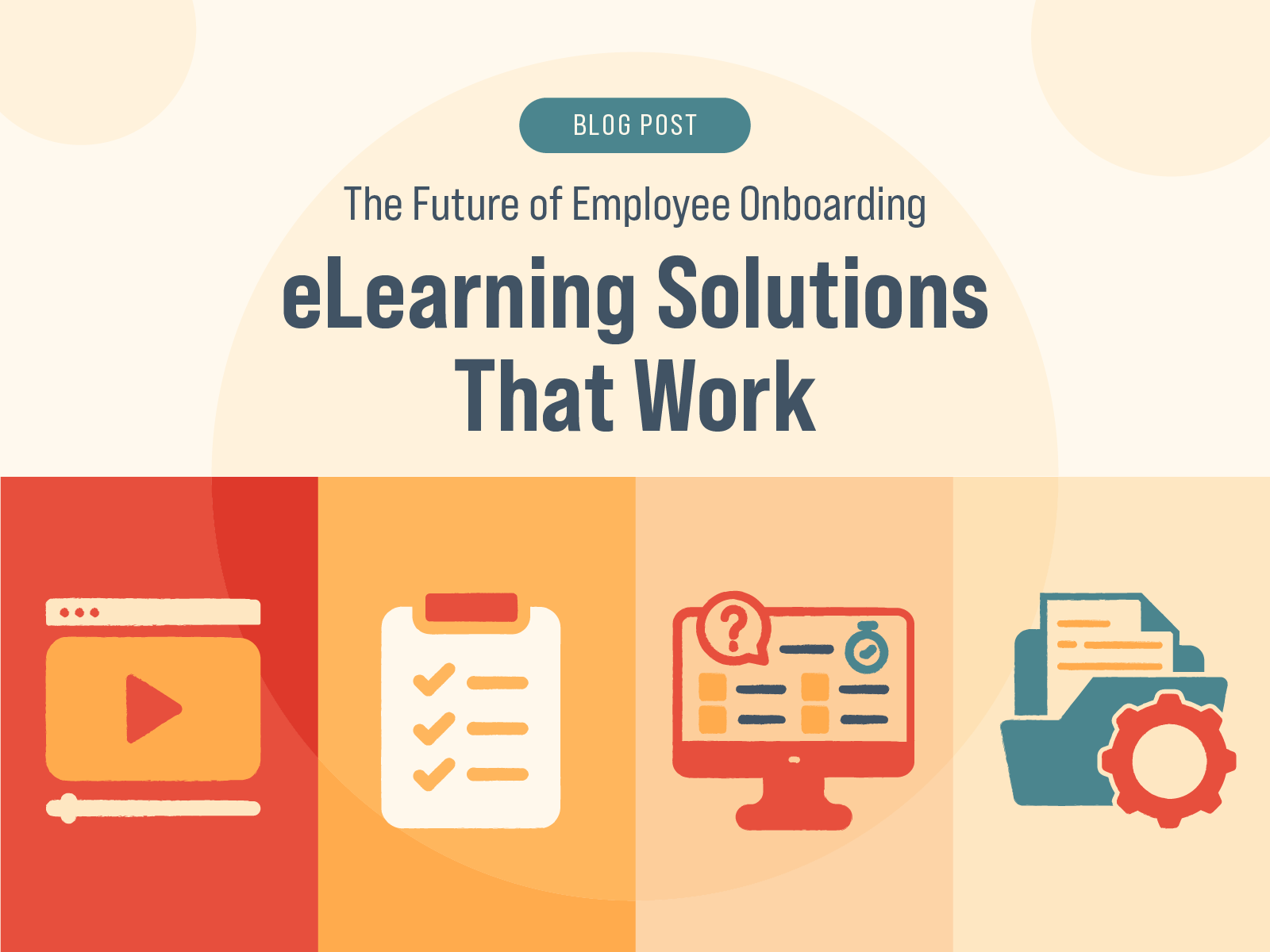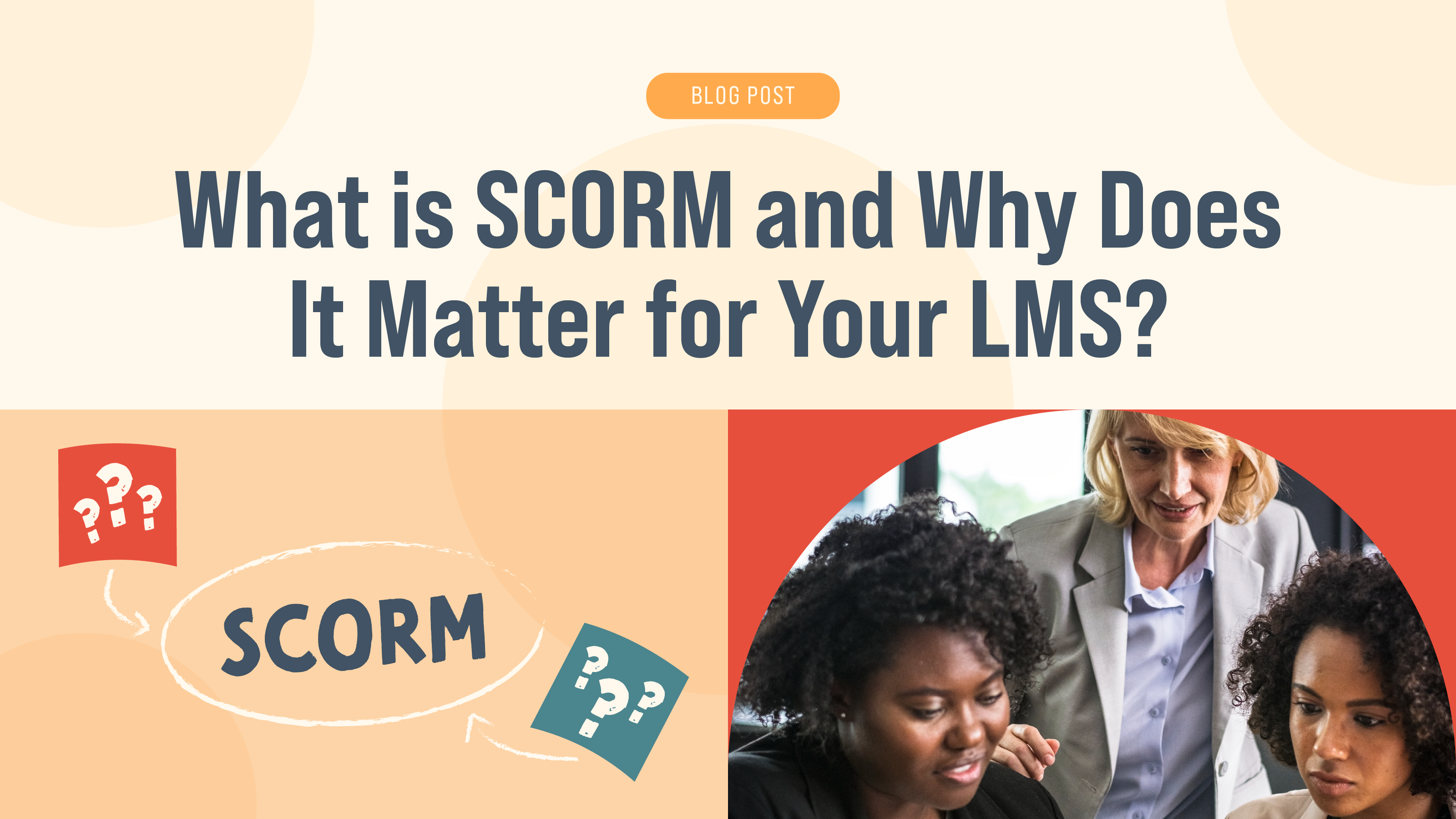What in the World is an LMS?
So you’re brand new to eLearning and have been tasked with creating mind-blowing training for your employees and new hires. No sweat! A common question we get from clients is, “how do we get a finished course into the hands of our employees?” That’s where an LMS comes into play.
What is an LMS?
LMS stands for Learning Management System. It is a software application designed to manage, deliver, and track eLearning courses and training programs. An LMS provides an online platform where Instructional Designers and eLearning Develppers can create, organize, deliver, and manage content, including multimedia resources such as videos, documents, and quizzes. Employees or students can access this content, interact with it, and submit assignments or assessments through the same platform.

An LMS is a critical component of eLearning applications as it enables instructors to create and deliver courses efficiently, manage student progress, and track performance. It also provides learners with a central location to access course materials, communicate with instructors, and collaborate with other students. Additionally, an LMS typically includes reporting and analytics features that allow instructors to monitor student progress and identify areas for improvement in the curriculum.
Common LMS Features
Some common features of an LMS include course authoring tools, content management, assessment and grading tools, student tracking and progress reporting, communication and collaboration tools, and mobile learning support. LMSs are used in a variety of settings, including academic institutions, corporate training programs, and professional development courses.
Pro tip: don’t use the content builder on your LMS! Use an external authoring tool like Articulate Storyline or Adobe Captivate. I can’t tell you how many times a client reaches out and says they lost their entire training curriculum when they switched to a new LMS. Most built in course designers use a proprietary tool that allows you to edit and post your content as long as you continue to subscribe to their LMS platform. This is common…and we’ve rebuilt hundreds of courses for companies that lost their entire training suite. Trust us, it’s brutal!

How to Publish an eLearning Course for an LMS
The process of publishing files for an LMS can vary depending on the specific LMS software you are using. However, there are some general steps you can follow. For this tutorial, we’ll look at Articulate Storyline, a popular authoring tool for creating eLearning content (and the preferred authoring tool here at Allegro Media Design!) If you want to publish your Articulate Storyline project to SCORM, you can follow these instructions:
1. Open your Articulate Storyline project and click on the "Publish" button in the top navigation menu.
2. In the "Publish" window, select the "LMS" tab and choose "SCORM" from the drop-down menu.
3. In the "SCORM" settings, choose the version of SCORM that you want to publish to. Articulate Storyline supports SCORM 1.2, SCORM 2004, and Tin Can API (Pro tip: If you’re unsure which version your LMS prefers, SCORM 1.2 or 2004 are usually a pretty safe bet.)
4. Enter the course title, description, and other metadata in the "Properties" section.
5. In the "Reporting and Tracking" section, select the tracking options that you want to use. Articulate Storyline allows you to track learner progress using variables or using the built-in tracking features of your LMS.
6. Click on the "Publish" button to generate the SCORM package.
7. Once the SCORM package is generated, you can upload it to your LMS. Most LMS platforms have a dedicated area where you can upload SCORM packages.
8. Test your SCORM package in your LMS to make sure that it is working as expected. Check that the tracking and reporting features are working correctly and that the course content is displayed properly.
9. If all is good, you can set up the content to be available to learners in a variety of ways, including making it accessible through a course or module, assigning it to specific learners, or making it available for self-directed learning.
Conclusion
Overall, the process of publishing files for an LMS can be relatively straightforward if you follow the steps outlined above and have a good understanding of the file formats and requirements of your LMS. But if it still seems a bit overwhelming, Allegro Media Design is here for you! Reach out today to tell us about your next project and see how we can bring it to life!
More Articles


Gamification in eLearning: Why It Works and How to Implement It

The Future of Employee Onboarding: eLearning Solutions That Work

What is SCORM and What Does it Matter

Accessibility in eLearning: Why It’s Essential and How to Achieve It

Microlearning: Bite-Sized Training for Big Results

Soft Skills Training Through eLearning: Building Better Leaders

How to Write Learning Objectives for eLearning Courses

When to Outsource Your eLearning Development (and How to Choose the Right Partner)

Employee Engagement in 2025: How eLearning Can Help

Training for a Multigenerational Workforce: Meeting Everyone’s Needs

The Future of eLearning: 4 Trends Shaping the Industry

How To Find the Right eLearning Developer

What Makes eLearning Effective?

Transform Your eLearning with the Magic of Animation

How to Use Audio to Enhance eLearning

Boost Learning Efficiency with Microlearning

Give Your Dated eLearning a Fresh Facelift

The Process of eLearning Part 5: The Implementation Phase

The Process of eLearning Part 4: The Development Phase

The Process of eLearning Part 3: The Design Phase

The Process of eLearning Part 2: The Analysis Phase

The Process of eLearning Part 1

Empower Your Workforce with Self-Paced Training

Elevate Your Training with Exceptional Visual Design

Taking the Confusion Out of SCORM

Embrace Efficiency: The Power of Outsourcing Your eLearning Production

Mastering eLearning: Elevating Corporate Training Through Scenario-Based Learning

Converting ILT to vILT: Embrace the Virtual Shift

Spice Up Your Boring Corporate Training With Animated Videos Copy

From Concept to Clicks: The Crucial Role of eLearning Developers

Lost in Translation: Mastering Multilingual eLearning

Training Crossroads: ILT or eLearning – What's Your Strategy?

How to Transform Boring Compliance Training

Last-Minute Crunch? Allegro Media Delivers Rapid eLearning Solutions Just-In-Time!

The Art of Chunking (or How to Eat a Whale)

Zen & The Art of eLearning Maintenance: Finding Harmony with Allegro Media Design

How to leverage ChatGPT for eLearning Applications

What Should I Look for When Hiring an eLearning Vendor?

Unveiling the Future of eLearning: Trends to Watch in 2024

Subject Matter Experts: Be Proud! Allegro loves you just how you are!

Enhancing eLearning Engagement: The Power of Scenario-Based Interaction with Stylized 3D Motion Images

Enhancing eLearning with DALL-e: Adding Visual Reinforcement for Engaging Corporate Training

Choosing the Right Authoring Tool for Your eLearning Course

High Quality Audio is ESSENTIAL in Modern eLearning

What in the World is SCORM?

A Complete Guide to Leadership Training and Development

Benefits of Customer Service eLearning Training

14 Tips To Effectively Use Audio for eLearning Courses

10 Instructional Design Tips for Effective eLearning

Why You Should Use eLearning For Product Training

Benefits of Voice Overs for Your Business

How to Create Great eLearning Content: 9 Tips

Video Marketing for Business: 10 Benefits of Promotional Videos

Gamification in the Workplace: Why and How to Use It

5 Best Practices for Training Remote Employees

How to Avoid eLearning Burnout and Fatigue

What Is Customer eLearning Training and Why Do You Need it?

8 eLearning Sales Training Best Practices: Tips & Use Cases

How to Effectively Use Videos in eLearning

Best Practices for Remote Employees Onboarding with eLearning

Why You Should Invest in Corporate eLearning?

How Can eLearning Reduce Employee Burnout?

How to Motivate Employees to Participate in eLearning Training: 9 Tips

eLearning Trends and Predictions: 2022 Forecast

7 Reasons to Outsource Your eLearning Course Development
%20to%20Virtual%20Instructor-Led%20Training%20(VILT).jpg)
How to Convert Instructor-Led Training (ILT) to Virtual Instructor-Led Training (VILT)

12 Best Tips on How to Improve Employee Training with Gamification in 2021-2022

What Is Compliance Training and Why Is It Important for Your Business?
%20vs.%20eLearning.jpg)
Instructor-Led Training (ILT) vs. eLearning: Which Should I Choose?

The Difference Between An Instructional Designer And An eLearning Developer
















